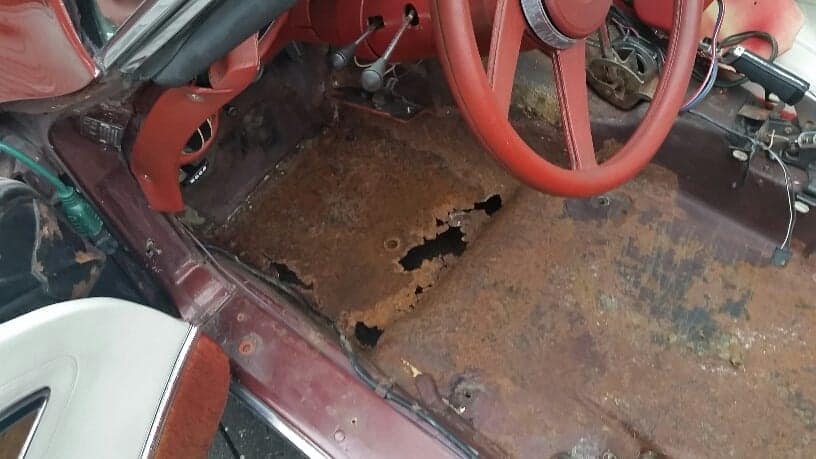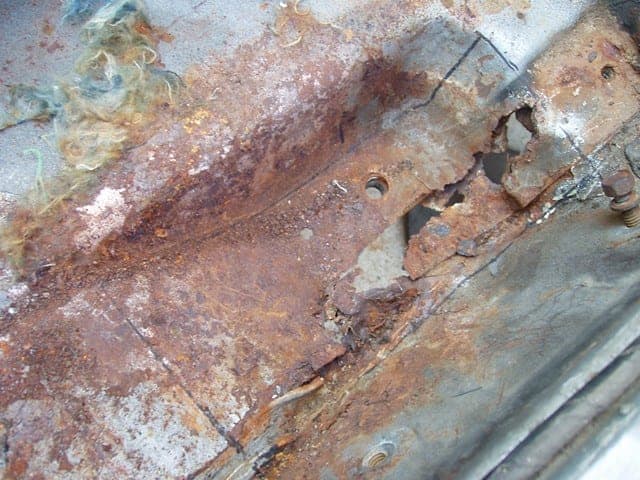RUST ON YOUR CORVETTE & HOW TO DEAL
A Corvette is a thing of beauty, to be revered and admired. And of course, you want to keep it that way, for as many years as possible. Although a Corvette is a tough machine, even Superman had Kryptonite. Kryptonite for Cars? Rust. Rust can put even the toughest cars out of commission if not dealt with immediately, or prevented altogether.
Fortunately, you are not without options when it comes to safeguarding your prized Corvette from the elements. Read on to learn what you can do to keep your Corvette, showroom ready.
WHAT CAUSES RUST?
That unsightly, brownish-red blemish found on cars exposed to specific conditions, is a result of corrosion of metal. Rust, otherwise known as oxidation of metal, occurs when iron, oxygen, and water meet. While many people think the main culprit for rust is winter, it is not the only cause, and in our opinion, it is not the most common cause.
While not the main cause, winter is not a friend to your car. In the winter, in order to safeguard icy roads, city trucks often drive through town salting all the roads. This salt, combined with the moisture from the snow and rain, makes for an even more hospitable environment for rust. Another thing to keep in mind, for you car enthusiasts who live near the ocean, the salt in the air can also increase the likelihood of rust developing. So just because you live on the beaches of Cali and endure no harsh winter, weather, does not keep you in the clear.
Early on when car manufacturers realized the vulnerability of metal when it came to rust, some companies quickly set to utilizing alternate materials in their builds. Fortunately for us, Corvette was one of them. From their very first Corvette in 1953, Chevrolet has utilized fiberglass for their body structure. However, this does not protect everything beneath the body.
In addition to water and salt, other conditions that we feel contribute more often to rust, are mud and mice. The combination of the right conditions, and the negligence to check for these conditions, make these two scenarios far more common in our experience.
In addition to using fiberglass for the body, GM also designed the Corvette frames so water and dirt can pass through the inside and exit out the factory holes. This is a genius and effective design that helps decrease the likelihood of rust developing due to mud buildup, but does require efforts on the owner’s part as well.
The final unpleasant condition to be aware of, that can contribute to the formation of rust in your Corvette, is mice. This is often overlooked. When it comes to car rust, more people talk about moisture and salt, than mice, but it should not be dismissed. Mice love to take carpet padding, and anything lying around the garage, and build a cozy and warm home inside your Corvette frame. Now, in addition to a blockage issue, you also have additional moisture with a high acid content, eating through the frame. Who would have thought something so small and furry, could do so much damage?
FOUR WAYS TO PREVENT RUST
CLEAN OUT THE MUD
As we mentioned above, GM did design a system to help keep water and dirt out of the Corvette frame. But without a little assistance of the driver, this system could fall short.
Take the time to clean the mud out of your frame occasionally. The mud that did not make its way out can plug the holes and eat the frame from the inside out. Mud of course does occur often in winter, but can occur in any season. Keep this in mind.
MOUSE PROOF
Do your best to keep your garage neat and tidy. Do a regular cleanup, and there will be less nesting material for these furry intruders. Keep your eyes peeled for droppings around the garage. If you find evidence that mice are afoot, you should check the frames of your car for holes where they may be nesting.
REGULAR CAR INSPECTIONS
You clearly love spending time with your car. Make some of that time dedicated to the goal of longevity for your car. Designate a time to check over your entire car to check for the conditions mentioned above. The earlier you catch the problem, the easier it will be to remedy.
If you own a C3 Corvette, the most common area for rust are the frame and the ‘birdcage’. Third generation Corvettes have been known to see heavy rust areas in the sections just forward of the rear wheels and the front cross member. The ‘birdcage’ areas you will want to pay close attention to are the framework around the door and the windshield pillars.
Keep in mind also, not all Corvette floors were fiberglass. Steel floor panels were used in C3 cars from 1976, onward.
DON’T DRIVE IN WET CONDITIONS
If your Corvette is more of a showpiece than a daily driver, you have the luxury of being able to cover it up and put it away for the season, if you choose. Many people who have vintage cars in pristine shape, have utilized this very practice. You may miss your car for the season, but you will be grateful for the sacrifice when you’re driving a Corvette in excellent condition for years to come!
“I HAVE RUST! NOW WHAT?”
If your Corvette is showing some signs of rust, fear not. There are ways to remedy the situation before it becomes unmanageable. But do realize, the sooner, the better. There are step-by-step guides, like this one from Advanced Auto Parts, that offer very clear instructions on how to get rid of early signs of rust. The article begins by emphasizing skill level, time required, and tools needed, making it very easy to follow.
If the rust is too far gone to be removed, you must assess whether a major or minor repair is needed. Some smaller patches may be fixed safely by an experienced welder. But remember, this isn’t DIY territory.
Keep in mind that serious structural rust isn’t just a monetary mark against your ‘Vette, but is a major safety concern. A car with a rusted-out frame or cross-member can literally split in half going down the road. A rusty birdcage can fail to hold the windshield in place, and we try not to think about what could happen if floor panels fail.
It may be tempting to “patch up” your rusty spots and let the next guy deal with it, but that could truly be a deadly decision. Plus, anyone who comes to buy your car and knows what they’re looking at will be leaving pretty angry- we wish we had a dollar for every time that has happened to us- or at least have the hours back that we wasted.
Your best bet when rust has gotten the best of you is either put up the money to have the frame, birdcage, etc. fully (professionally) replaced, or cut your losses and move on- junk the car and look a lot closer at the next one.
CONCLUSION
Rust is clearly foe, not friend, when it comes to your Corvette. But the greatest way to prevent problems, and safeguard the future of your car, is to be educated. We hope this piece has offered you some insight that will ensure you many rust-free years with your beautiful machine.
As always, thanks for checking in here at Hobby Car Corvettes in Martinsburg, Pennsylvania. We add posts to our blog on a regular basis on a wide variety of topics, ranging from informative to entertaining. But no matter what we’re in the mood to write, it all comes back to our love for Corvettes. Stay tuned, because we have so much more to offer!
Check out the rest of our site to see what Corvettes we have currently on our sales floor and in our Private Collection!













